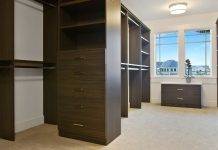Every homeowner wants a comfortable living space—cool in the summer, warm in the winter, and balanced during those in-between seasons. But achieving consistent indoor comfort isn’t just about adjusting the thermostat. It takes a combination of proper maintenance, smart upgrades, and a proactive approach to climate control.
Here are some essential strategies to help you keep your home feeling just right all year long, no matter what the weather outside is doing.
Table of Contents
Start with a Quality HVAC System
Your heating and cooling system is the foundation of indoor comfort. Whether you’re dealing with scorching summer days or chilly winter nights, a well-functioning HVAC system keeps your home at the temperature you want without wasting energy.
If your system is more than 10–15 years old, it may be time to consider an upgrade. Modern systems are more efficient, quieter, and better at maintaining consistent temperatures throughout your home.
Even if your HVAC is in good shape, it needs regular attention. Scheduling an air conditioning service at least once a year ensures it operates at peak performance. Routine service can catch problems early, extend the system’s lifespan, and help you avoid emergency repairs when you need it most.
Improve Your Insulation
One of the biggest contributors to indoor temperature swings is poor insulation. If your home isn’t properly insulated, your HVAC system has to work harder, which means higher utility bills and uneven comfort.
Check key areas like:
- Attics
- Crawl spaces
- Basements
- Walls and ceilings
Upgrading or adding insulation in these areas can help maintain consistent indoor temperatures, improve energy efficiency, and reduce strain on your HVAC system.
Seal Drafts and Air Leaks
Even small gaps in doors, windows, and ductwork can allow air to escape, making it harder to control your indoor environment. This is especially noticeable during the winter when cold drafts sneak in or in the summer when cool air seems to disappear.
To improve your home’s energy efficiency:
- Add weather stripping around windows and doors
- Seal duct joints and vents
- Use caulk to close gaps in baseboards or window frames
These simple fixes can make a big difference in both comfort and utility savings.
Use Programmable or Smart Thermostats
One of the easiest ways to improve your home’s comfort is to install a programmable thermostat. These devices allow you to set temperature schedules based on your lifestyle—for example, lowering the heat at night or raising the AC when you’re away during the day.
Smart thermostats go a step further by learning your habits and making automatic adjustments. Some can even be controlled remotely from your smartphone, giving you total control over your indoor climate, no matter where you are.
Don’t Forget About Humidity
Temperature is only part of the comfort equation—humidity matters too. In the summer, high humidity can make your home feel muggy and warm even when the AC is running. In the winter, dry air can cause dry skin, sinus irritation, and static electricity.
To manage humidity year-round:
- Use a dehumidifier in damp areas like basements
- Run exhaust fans in bathrooms and kitchens
- Add a whole-home humidifier during dry months
Maintaining ideal humidity levels (between 30–50%) helps your home feel better and supports your HVAC system’s efficiency.
Optimize Your Window Treatments
Windows are another common culprit when it comes to comfort loss. Sunlight streaming in during the summer can overheat a room, while bare windows in the winter can let cold seep in.
Make smart use of window treatments:
- Use blackout or thermal curtains to block out heat
- Install reflective shades or blinds for summer
- Open curtains on sunny winter days to bring in warmth, then close them at night to trap heat inside
These small adjustments help regulate your home’s temperature naturally, giving your HVAC system a break.
Seasonal Maintenance Checklist
Staying on top of maintenance throughout the year helps prevent problems before they start. Use this seasonal checklist to guide your comfort strategy:
- Schedule annual air conditioning service and heating tune-ups
- Change HVAC filters every 1–3 months
- Inspect insulation and add more if needed
- Seal gaps in windows, doors, and ducts
- Install or upgrade to a programmable thermostat
- Monitor and manage indoor humidity
- Use curtains or blinds to regulate sun exposure
By taking care of your home season by season, you’ll keep your living environment stable, energy-efficient, and comfortable all year.
Small Changes, Big Impact
Creating a comfortable home environment doesn’t always require major renovations. In fact, many of the biggest improvements come from small, intentional changes—like sealing a drafty window or scheduling an HVAC tune-up before the heat of summer or chill of winter arrives.
These changes work together to build a home that feels better to live in, with less energy waste and fewer surprises when your utility bill arrives.
And if you’re unsure whether your system is up to the task, start with a professional air conditioning service. A qualified technician can assess your current setup, recommend any needed repairs or upgrades, and help you take control of your indoor comfort once and for all.








